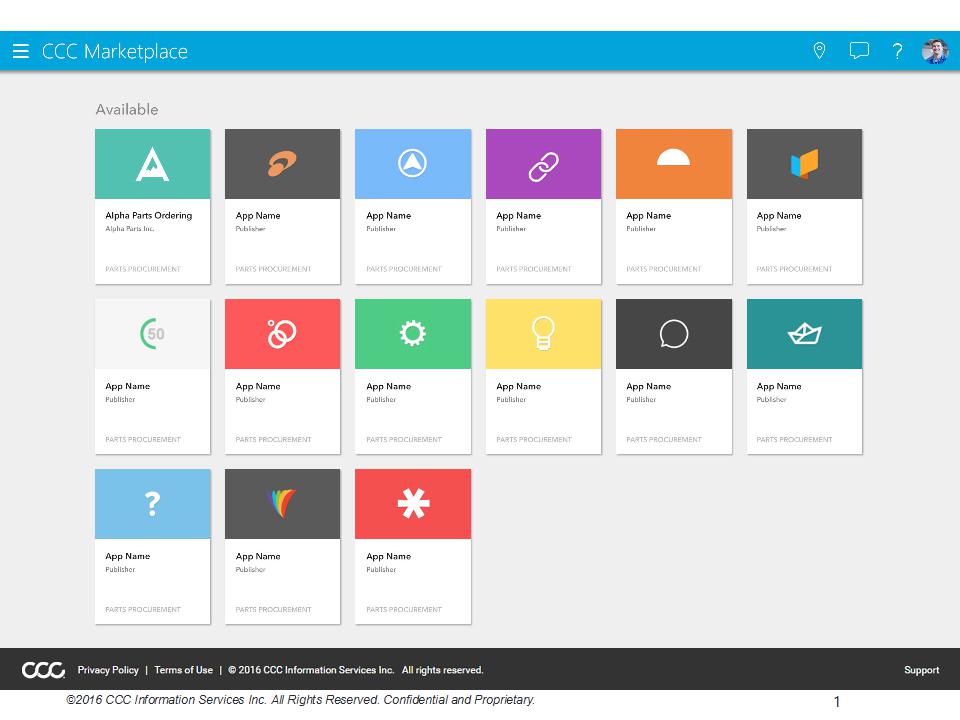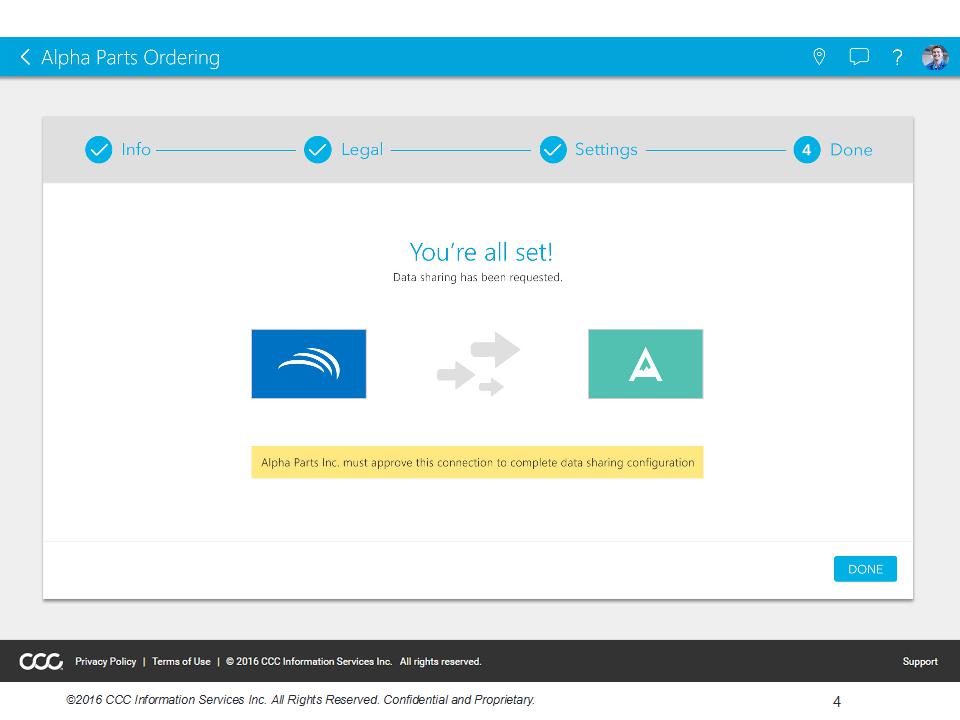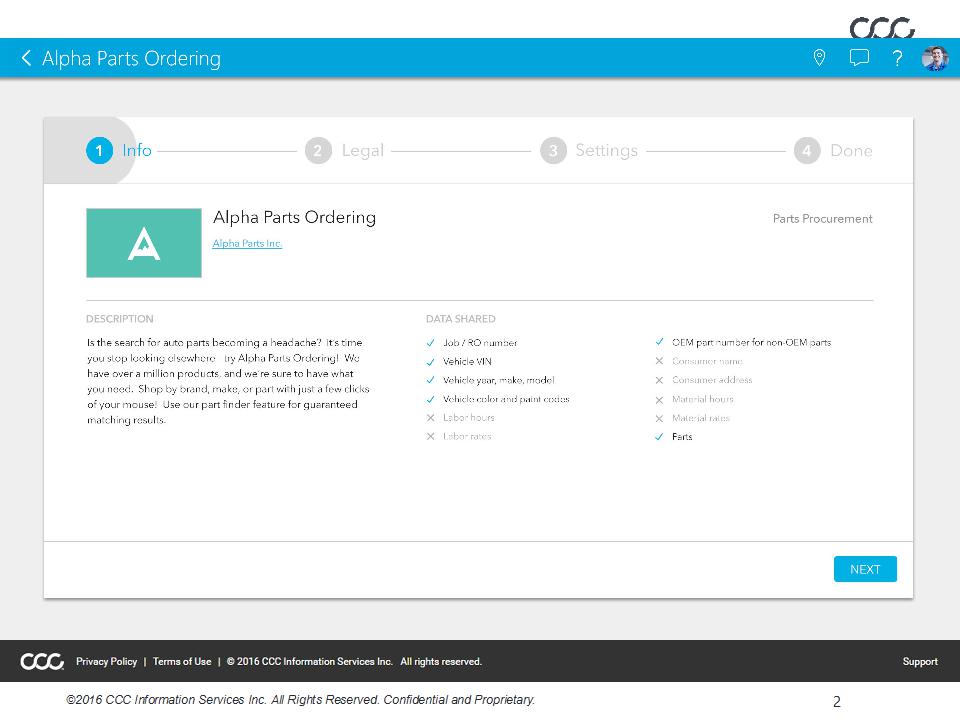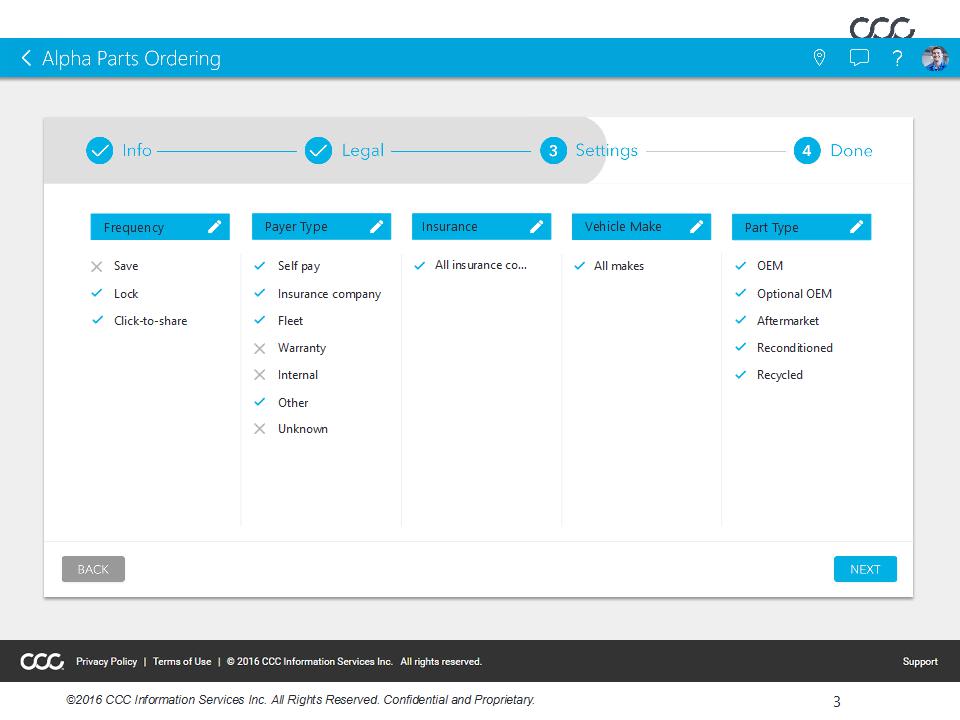
CCC: Secure Share still on track for April BMS launch; developer API fee waived until ’18
By onBusiness Practices | Market Trends | Repair Operations | Technology
CCC said its transition to the BMS collision repair data standard was still on schedule and continuing to gain traction in the industry, though not all major repairer B2B partners have yet signed on to CCC’s new controversial Secure Share BMS delivery system.
CCC announced in September it would in April support the Business Message Suite collision repair data protocol and “sunset” the Estimate Management Standard standard a year later.
The two standards allow collision repairer- and insurer-focused software like the estimating services to “talk” to other shop business partners’ software. BMS is modern (XML), more efficient and better at protecting personal/business data (and under CCC, it’ll be 128-bit encrypted too). EMS is archaic (typically dBase IV) and no longer supported by CIECA, which created both standards and continues to refine the BMS standard for anyone in the collision repair ecosystem that uses it.
Recognizing the technological difference and industry demand for BMS, CCC will launch what it calls Secure Share to facilitate exchanging those messages. Under Secure Share, shops will use a kind of “app store” to designate the vendors they wish to receive segment-specific BMS data and add other filters to what is or isn’t transmitted as well.
Vendors who wish to receive that information will have to pay a per-workfile fee of $0.50 starting in April 2018, and for those who register after this year, potentially a one-time fee of $2,500 for the API to get their existing software to interface with Secure Share.
CCC initially had waived the $2,500 API charge for vendors who registered before Jan. 1, and Vice President of market solutions Mark Fincher announced Thursday that the company would continue to waive it through the end of 2017.
“We have decided to extend that,” Fincher said. Following Dec. 31, 2017, the company will decide what, if any, pricing to charge for the API going forward.
Shops will see no change to their own CCC bills under Secure Share.
Fincher said in an earlier Jan. 4 interview there’d been “significant interest expressed” by third-party vendors, and the company had “over 20” companies formally registered and “many that are in the queue” which have signed up but haven’t finished that process.
“We’re excited to see that,” Fincher said of the turnout. He estimated some of the “in-queue” business were likely still reviewing the CCC Secure Share terms of use.
CCC had earlier expressed a hope that shifting to such an easy way of reaching its 22,000 clients digitally would promote innovation. (Kind of like how the Android and Apple app stores unleashed a flood of third-party apps.)
“We’re seeing just that,” Fincher said, remarking again on interest from developers “we weren’t even aware of.”
Most of the 20 registrants, however, were names the collision repair industry would expect.
“We have a number of the largest companies,” Fincher said. “… I would not say that we have all of them.”

Some big guns haven’t yet signed up. Others have started the signup process, according to Fincher, who said CCC was “very optimistic” they’d complete their registrations.
API documentation was sent out in the fourth quarter of 2016 to registered vendors, and it’d yielded “a lot of good questions,” according to Fincher.
He said CCC had begun to open up some Secure Share testing for the developers, and next month, the company would expand the trial runs to sending messages and simulating load testing.
“We’re on track to go live in April,” Fincher said. He said CCC was even “absolutely equipped” to handle the unlikely scenario of all 22,000 CCC users switching to BMS immediately on Day 1 of the transition period.
CCC spent time on the road over the past three months talking to third-party app providers and repairers. “We’ve received a lot of positive feedback,” Fincher said.
Fincher said CCC had heard a “consistent theme” of fear for the effects of the Secure Share pricing model (Read more on CCC’s response to that here.), but third-party developers seemed to agree BMS itself was superior to EMS.
Besides developing the process to send messages to the app provider, CCC also provides vendors with analytics to measure the volume of shop communications and a means of activating shops from the vendor’s end.
Fincher said CCC also “built in a lot of back-end logic that didn’t exist with EMS” to ensure the recipients were sent the right version of a file, particularly one with multiple users making changes on the cloud system. CCC can send the changes in the proper sequence, and it can push to a recipient’s server in “near real-time” which means shops and vendors shouldn’t have to wait for each other to upload/download the file.
CCC also built a means to queue files in the event a vendor’s server crash. When the vendor was back up and running, the flow of BMS messages would resume, and in the correct order.
“There’s a lot of architecture,” he said.
Repairers are happy for the security benefit, but they’ve also given CCC “positive feedback” for the Secure Share interface itself, Fincher said.
Setting up EMS filters was a complicated process, Fincher said. With Secure Share, filtering BMS messages uses just a “simple dashboard” resembling a app store.
Body shops just select a vendor, read an agreement, set up what information they would like that vendor to receive, and start doing business, he said. Vendors then approve the shop to start the data flowing.

Under EMS, the vendor received all the repair order data by default, which is not only inefficient but detrimental to customer, shop and business partner privacy. BMS typically sends a vendor an industry-specific subset of all the data fields generated by a particular repair job — i.e. a parts company gets all the parts-related fields on every repair.
That’s still going to send some data to folks who don’t need or want it, but shops can further refine the data stream in Secure Share. Fincher described the ability to restrict files by criteria like insurance carrier, vehicle make (for OEM-certified shops) and even part type (an aftermarket vendor won’t see parts data for an all-OEM repair).
“They appreciate that control,” Fincher said of shops CCC had talked with about Secure Share.
Shops also can set up when they’d like that app provider to receive the BMS messages, such as every time an estimate is saved or locked — or even purely on demand and controlled by the shop, Fincher said.

That new on-demand time frame could be useful to both a shop and their vendor. Fincher gave the example of paint calculator software that a shop might only use on 10 percent of their work. The shop doesn’t want to send paint data to a company not involved in the other 90 percent of repairs, and the vendor probably doesn’t want to waste computing effort or $0.50 an estimate on the others, either.
“It doesn’t default to that one,” Fincher said, but on-demand is one of the three options a shop can pick for a vendor in terms of BMS message frequency.
Asked what companies would need data from every single repair, Fincher pointed to marketing companies or a parts procurement service a shop uses every time.
“I think that’ll be a pretty common selection,” he said of the send-it-every-time option.

Fincher said he didn’t have a good sense as to what percentage of CCC’s 22,000 shops would in fact start using the BMS service in April.
Sometimes with new features, even free ones, it takes a while for shops to “click the button,” Fincher said. He said CCC planned marketing campaigns to encourage it.
“It really varies,” Fincher said. “Sometimes things really take off.”
Insurers might have more to lose than shops from a data breach or other exposure of their mutual customer’s data, but Fincher said he hadn’t heard of any big carrier pushes (such as by DRP shops) for repairers to switch.
“They see the benefits of it,” he said.
More information:
“CCC Introduces CCC Secure Share™ Network”
CCC, Sept. 29, 2016
Images:
CCC’s booth at SEMA 2016 is shown. (John Huetter/Repairer Driven News)
A draft of CCC’s Secure Share program for filtering and managing recipients of auto body shop data through BMS is shown in this screenshot. (Provided by CCC)
